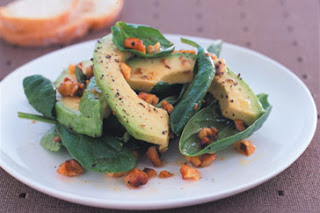Ten ways to save money by going green
Most everyday, simple green acts do also happen to save money
June 3, 2008
By Leo Hickman, The Guardian Newspaper.

Leo Hickman trials cloth nappies on his daughter. Photograph: Graham Turner
With all this talk about how an economic downturn will spell the death of environmentalism, it seems like a good time to remember that there can be some very good savings to be made by "going green".
The central logic is undeniable: any act where you try to reduce your energy use will lead to savings in both costs and emissions. Equally, being thrifty with precious resources such as water will also leave you with more money in the pocket.
It all sounds so crushingly obvious when you spell it out, but this message often gets drowned out by all that talk about how much a loaf of organic bread can cost, or how cripplingly expensive it is to pay the upfront costs of fitting solar panels.
But most of the everyday, simple acts to live a more environmentally sensitive life do happen to save money.
To get the ball rolling, here are 10 ways to save money by going green. Please do add your own ideas below ...
Zonal living
You've fitted draught excluders and heavy curtains to your external doors and windows. You've turned the thermostat down a couple of degrees. You've put on a woolly jumper. But there are still other ways to keep your heating costs down. One of the simplest is to think about the "zones of living" in your house and heat them accordingly. For example, you only really need to heat your bedroom and bathroom for a maximum of a couple of hours each day, typically in the morning.
Equally, you only really need to heat your sitting room for the few hours in the evening when you are likely to be in there watching TV, or whatever. Thermostatic valves and timers can help you heat each zone accordingly rather than simply flicking the "on" switch on your heating and firing up the whole home.
Video conferencing
Why waste hundreds, if not thousands, on traveling all the way by plane to some faceless hotel for a two-hour meeting with a business associate when you could just save time, hassle, money and emissions by speaking to them via video conference? The technology is improving all the time and it is now even free if both parties use software such as Skype.
Change your driving style
You can knock up to 20% off your fuel costs simply by changing the way you drive your car. In the US, the Drive 55 campaign tries to educate drivers about how much less fuel efficient a vehicle becomes once it exceeds 55mph. In the UK, there are now even eco driving lessons on offer to teach drivers how to go through the gears smoothly when pulling away from a junction - one of the most fuel-intensive actions when driving. One good tip in a petrol car is to try and change gear before the engine reaches 2,500 revs.
Cloth nappies
The Women's Environmental Network estimates that parents can save almost £1,000 over the 2.5 years a child is typically in nappies if they use "real" nappies instead of disposable ones. It's probably fair to say that the savings are even better than this given how much disposable nappies are going up in price at the moment due to the fact that they are materials produced from petrochemicals. But don't be tempted to use a ...
Tumble dryer
Of all the white-good appliances in our homes, nothing munches kilowatts quite as ferociously as the tumble dryer. A washing line or clothes horse will help you save hundreds of pounds over the life of an average tumble dryer, very few of which are A-rated in terms of energy use. Even the Church of England recently got in on the act of calling "for an end to spin". For a list of Energy Saving Trust-recommended dryers, click here.
Water butts
Water bills seem to be rising along with just about every other utility at the moment so it clearly pays to reduce your water consumption wherever possible. Hose pipes can use huge amounts of water, particularly if you're watering a lawn, or washing a car. Getting a spring-loaded nozzle for your hose can help you get your water use down, as can using a bucket and sponge to wash your car. Lawns are a much trickier one. Sprinklers are a no-no, really, as they can use hundreds of litres of water an hour.
Better just to let your grass grow a bit longer in summer so it can better retain moisture. Better still, get a water butt and use rainwater to water your garden. Many local authorities now offer subsidised water butts.
Invest in a flask
It's funny how old technologies are so often the best. For many of us, flasks have slipped from the mind as an everyday tool, but they are incredibly useful - and, more importantly, incredibly efficient. For example, you only need to boil a kettle once in the morning to provide all your hot water for tea and coffee for the rest for the day. And if you take it to work you will save yourself a few quid each day by not needing to buy tea or coffee once there.
Food cooperatives
For just a few pounds a year, you can join a local food cooperative, which will help you to keep your food costs down by taking advantage of the wholesale prices that collective buying allows. And it means that you get to support local farmers and keep food miles to a minimum. The Soil Association has a long list of local food networks and cooperatives on its website so have a look and find the closest one to you. And if you want to set up your own, it's worth knowing that there is currently £50m worth of Lottery-funded grants up for grabs to support local food projects.
Seed swaps
People have been doing this for centuries, of course, but the act of swapping your spare seeds (steady now) with other gardeners seems to have formalised in recent years into proper community get-togethers, as seen by the popular Seedy Sunday meets. Made all the more attractive by the fact that seed prices are, like everything else, going north all the time. Why pay £3 a packet for some generic carrot seeds, when you can get some Cherokee Trail of Tears beans for free?
Car clubs
Get public transport... Yadda, yadda. Yes, we all know the drill by now, but one increasingly popular way to reduce car use and save money is to join a car club. It's a concept that is only really suited to city-dwellers, but car clubs are nonetheless a very economic for the occasions when only a car will do. Street Car in London, for example, starts at £3.95 an hour, and there's usually one parked within a few streets of your home. Plus, you don't have any of the extra hassles of owning a car such as MOTs, insurance and garage bills. Oh, and the first 30 miles of fuel you use per day are free.
So what other money-saving green actions can you think of? Post your own suggestions here ...


















